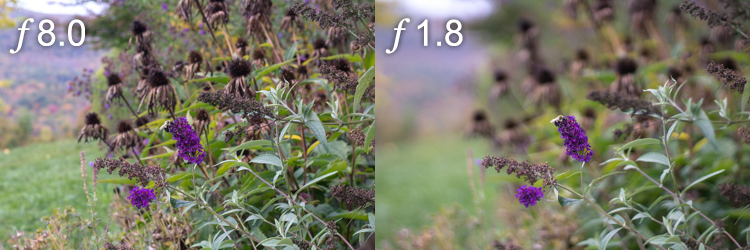
Depth of field is a critical component to photography, and can truly make or break an image. If you’re new to photography, you may be unclear what the phrase means, exactly, and how it affects your photos. There are 3 main factors that will allow you to control the depth of field of your images: the aperture (f-stop), distance from the subject to the camera, and focal length of the lens on your camera. Let’s dive in and see how we can use these tools to get the style of photos you’re looking for.
What is depth of field?
A basic definition of depth of field is: the zone of acceptable sharpness within a photo that will appear in focus. In every picture there is a certain area of your image in front of, and behind the subject that will appear out of focus.
- Shallow Depth of Field: The more blurry it is in front of and behind your subject.
- Deep Depth of Field: The more crisp and in-focus the area is in front of and behind your subject.
3 factors that control depth of field
- Aperture (f-stop): The diameter of the hole through which light enters the camera that controls the amount of light entering your lens. Shooting in ‘Aperture-Priority Mode’ will allow you to simply adjust the f-stop without worrying too much about the shutter speed.

- Small f-stop number (f/1.8) = Large Aperture/Opening (more light) = Shallow Depth of Field (more blurry background)
- Bigger f-stop number (f/8.0) = Small Aperture/Opening (less light) = Deep Depth of Field (more crisp background)
- Distance from the subject to the camera: The closer your subject is to the camera, the shallower your depth of field becomes (i.e. portraits & wildlife close-ups). The opposite holds true, so moving further away from your subject will deepen your depth of field (i.e. landscapes).
- Focal length of the lens on your camera: The capability of a lens to magnify the image of a distant subject. The longer (more zoomed in) you set your focal length (100mm) the shallower the depth of field (smaller area in focus). This works best with zoom lenses like a telephoto, but can be achieved by using longer 100mm or more interchangeable lenses.
When should you use a shallow depth of field?
In portrait, wildlife and sports photography, using a shallow depth of field is a great way to make your subject stand out from its background. Anytime you have darker/low light situations, having a shallow depth of field will give you more light by increasing the aperture size. When you want to freeze the action of your subject, like a bird flying or an athlete mid-jump, lowering your f-stop number will increase your shutter speed, thus your subject will be in crystal-clear focus.
How to decrease depth of field
- Widen your aperture (smaller f-number)
- Move closer to the subject
- Lengthen your focal length
When should you use a deeper depth of field?
In landscape photography it is a good idea to get as much of your scene in focus as possible. Wide angle lenses and smaller apertures will maximize your depth of field. This deep depth of field will get your entire scene in focus with very little blurred objects.
How to increase depth of field
- Narrow your aperture (larger f-number)
- Move farther from the subject
- Shorten focal length
ADDITIONAL RESOURCES:
Understanding Depth of Field for Beginners




